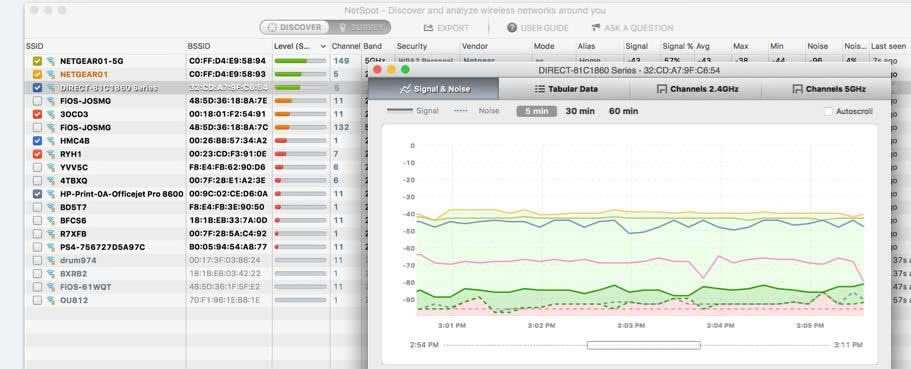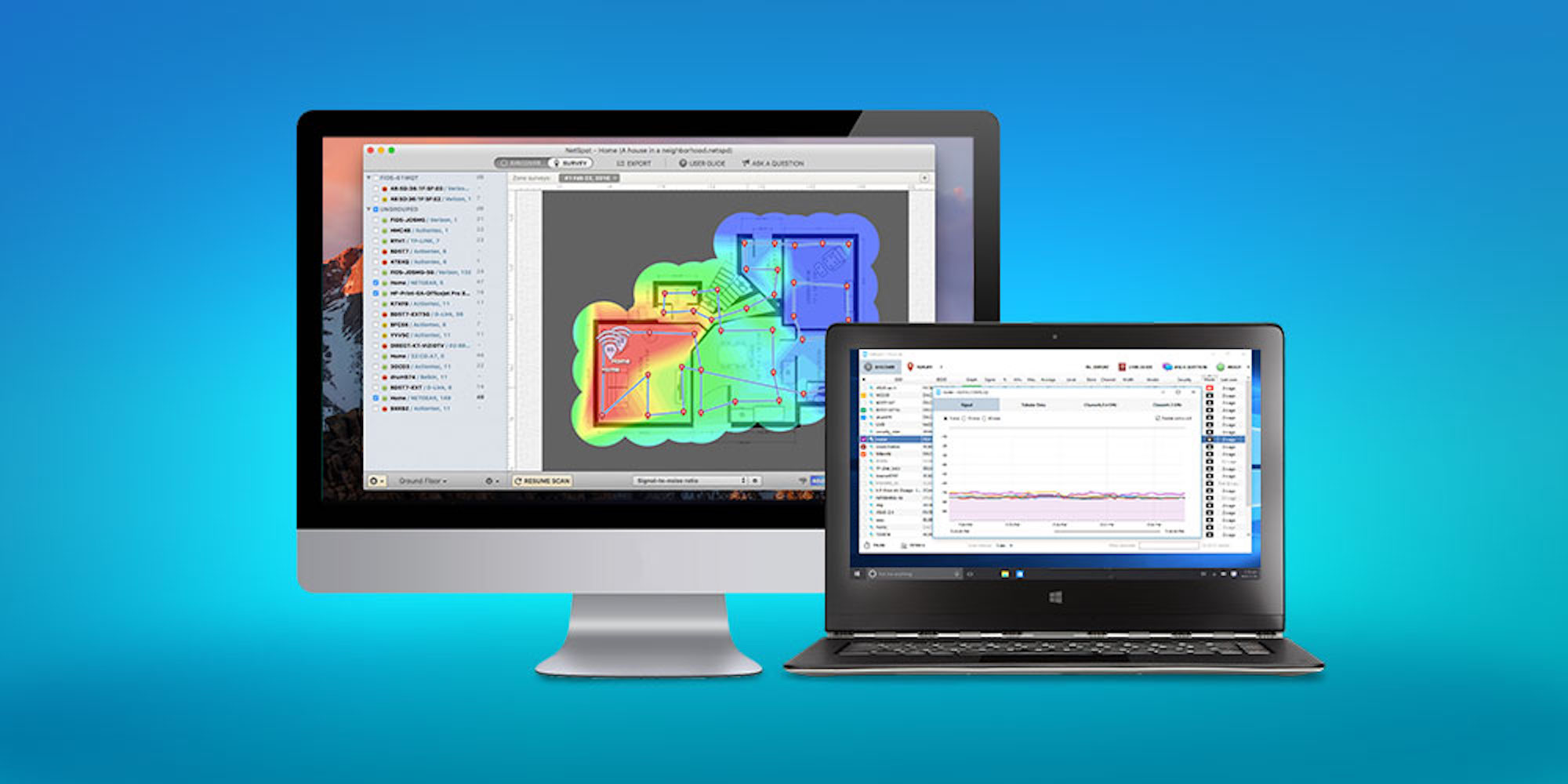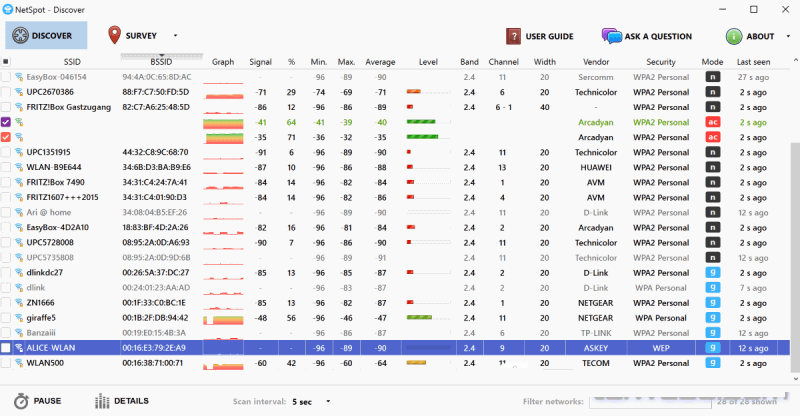
For organizations where outdoor coverage is a concern, some enterprise oriented solutions even implement GPS.
#Netspot pro heat manual#
Alternatively, manual surveying allows you to walk around the space with a mobile device, building a dynamic map from the data it collects. To accurately replicate your coverage area, most tools can import images or blueprints of your layout for georeference. Displayed as color coded heat waves, we can easily check the signal strength in each room and see if it’s hot, cold or somewhere in between. Instead of making a blind guess as to the source of problems, WiFi Heat Maps provide the ability to map out and visualize an entire wireless network. This is where WiFi Heat Maps can prove to be invaluable tools, pinpointing the problematic areas and helping to narrow down the cause. Nearby wireless devices on the same frequency, microwaves and other appliances, or even a neighboring company’s WiFi network near the building.Īny combination of these factors can affect your wireless signal, resulting in slow transfer speeds, dead zones or even connection drops. Setting up a WiFi network for business often means coverage for a significantly larger area, and that requires extra considerations for a variety of potential problems that can arise.Īs we expand the service range, signal interference can occur from physical obstructions such as walls and furniture, but also intangible things as well.
#Netspot pro heat software#
Most WiFi heat map software solutions can gather information about the configuration of your router, as well as other routers in the area.Wireless networks are reliant on close proximity to an access point, losing signal strength as the distance grows. You should also pay attention to your router security settings, because the last thing you want is to let other people use your internet connection without your approval. In the 2.4 GHz band, there are 11 channels (at least in North America), with channels 1, 6, and 11 being the only non-overlapping channels. The main setting you should pay attention to is your WiFi channel.

Unfortunately, not all physical obstacles can be easily removed. In extreme cases, physical obstacles can create dead zones, which can be clearly seen on a WiFi heatmap.
#Netspot pro heat install#
Materials like metal can also have a significant impact on your wireless signal, which is why you should never install a WiFi router near metal appliances.

Using a WiFi heatmapping software application, you can visualize frequency band coverage and configure your router accordingly. Unfortunately, something similar can happen to you when surfing the web, downloading files from the internet, or video chatting with friends because digital traffic jams can occur when too many WiFi networks in the same area broadcast on the same frequency and channel. Other WiFi networks: Being stuck in traffic on your way to work is no fun, especially if you’re in a hurry and need to get there as quickly as possible.Modern WiFi routers have plenty of useful features intended to improve your online experience, so upgrading once in a few years is typically always a good decision. A WiFi heatmapping tool can help you understand the limitations of your WiFi router and decide if you should get a new one. You can’t reasonably expect a budget WiFi router to cover a large home or office building with a strong WiFi signal no matter how well you position or configure it. Your WiFi router: There are many different WiFi routers, and the quality of coverage they provide varies greatly.

As you may know, WiFi coverage is affected by many different factors, including: The purpose of creating a WiFi heatmap is to obtain accurate information about the quality of coverage of a WiFi network. What Is the Purpose of Creating a WiFi Heatmap?


 0 kommentar(er)
0 kommentar(er)
